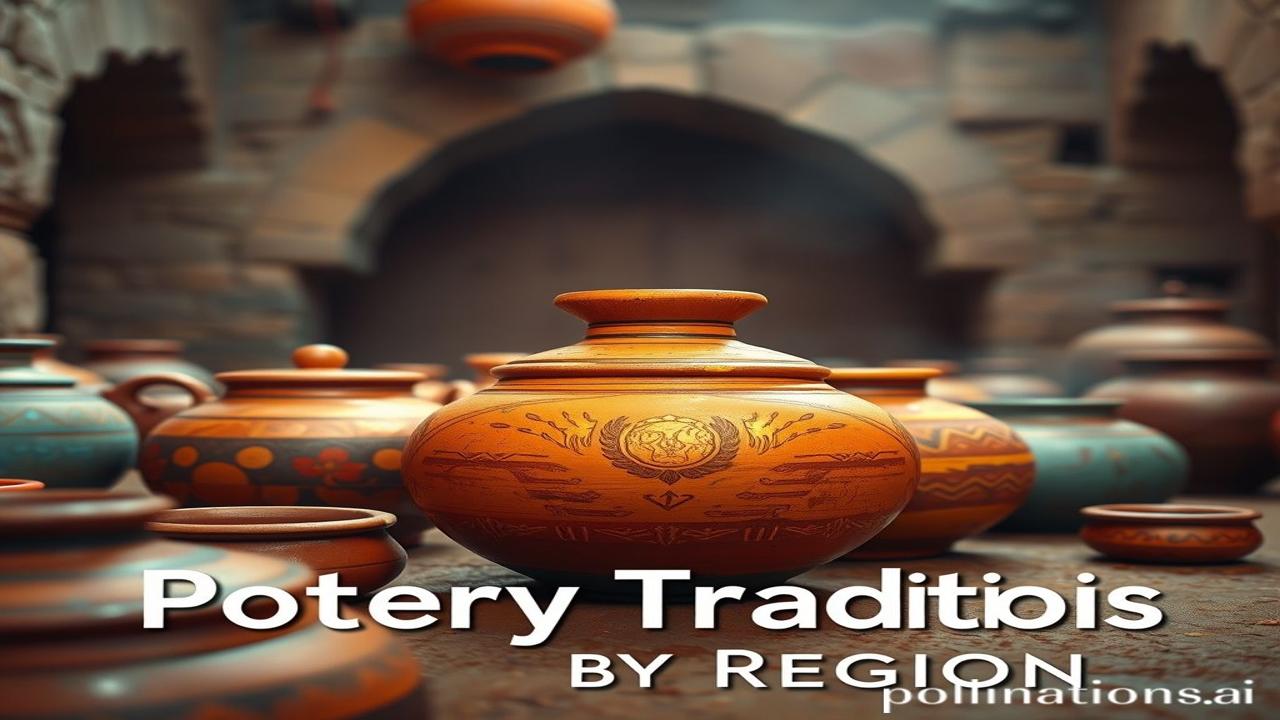Mitti Ki Khushboo, Zindagi Ka Rang: Unveiling India’s Regional Pottery Traditions
Kabhi socha hai, jab koi kumhaar chaak ghumata hai, toh sirf mitti nahi, waqt bhi ghumata hai? You see, pottery isn’t just about making beautiful things; it’s about holding history in your hands. From the rugged terrains of Rajasthan to the fertile plains of Bengal, every region of India sings its own song through its pottery traditions. Let’s dive in and explore this fascinating world!
Bharat Ki Mitti Ka Itihaas: Pottery, A Timeless Art
Pottery, yaani mitti ke bartan banana, is one of the oldest forms of art known to humankind. Its history in India goes back to the Indus Valley Civilization (around 3300-1700 BCE). Think of Mohenjo-daro and Harappa – unearthed pottery there tells us so much about their society, their daily lives, and even their beliefs. But pottery isn’t just about the distant past. It’s a living, breathing tradition that continues to evolve, reflecting the unique cultural identity of each region.
Why is it so important? Well, pottery wasn’t just decorative. It was functional. It was used for storing water, cooking food, serving meals, and even for religious rituals. The materials used, the shapes created, and the decorations applied all tell a story about the people who made and used them. Pottery connected people to the earth, to their ancestors, and to each other.
Zameeni Sach: Potter’s Chak, Gaon Ki Dhun
Imagine a small village in Rajasthan. Dhool bhari hawa mein, the sound of the potter’s wheel fills the air. Meet Ramlal, a third-generation potter. His hands, roughened by years of working with clay, move with practiced ease. He shapes the mitti into beautiful surahis (water pitchers), vibrant matkas (pots), and intricate diyas (oil lamps).
“Beta, yeh kala hamare khoon mein hai,” he tells his grandson, as he carefully paints a design on a terracotta horse. “This art is in our blood. Our ancestors learned from their ancestors, and now it’s our duty to keep it alive.”
Ramlal’s wife, Savitri, uses the pots to store water from the village well. The cool water, filtered through the porous clay, offers relief from the scorching desert heat. Every evening, diyas made by Ramlal light up the village temple, their flickering flames representing hope and devotion. The entire village relies on his craft, and in turn, he relies on the village for his livelihood. This symbiotic relationship is the heart of India’s pottery traditions.
Region-Specific Pottery Traditions: A Kaleidoscope of Styles
India’s pottery scene is incredibly diverse. Here’s a glimpse into some of the regional variations:
- Rajasthan: Blue Pottery & Terracotta: Known for its vibrant blue pottery, using a unique blend of quartz powder and glass. Terracotta horses and figurines are also popular, reflecting the region’s rich equestrian culture.
- Bengal: Terracotta Temples & Decorative Pottery: Bengal is famous for its stunning terracotta temples adorned with intricate carvings. The region also produces beautiful decorative pottery, often featuring floral and geometric designs.
- Uttar Pradesh: Black Pottery of Nizamabad: Characterized by its shiny black finish, achieved through a special firing process. Often inlaid with silver or gold, creating a striking contrast.
- Tamil Nadu: Karigiri Pottery: Known for its unique black color and distinct texture, achieved by using locally available clay and traditional firing techniques.
- Gujarat: Kutch Pottery: Intricate geometric patterns and vibrant colors are hallmarks of Kutch pottery, reflecting the region’s rich textile traditions.
Dharohar Aur Pehchan: Pottery in Modern India
Even today, pottery holds a significant place in Indian culture. We see it in our homes, in our temples, and in our markets. From simple clay diyas used during Diwali to elaborate terracotta sculptures displayed in art galleries, pottery continues to inspire and captivate.
The ‘Make in India’ movement has given a much-needed boost to local artisans, including potters. There’s a growing appreciation for handmade products and a desire to preserve traditional crafts. Young designers are collaborating with potters to create contemporary pieces that blend tradition with modern aesthetics. Pottery is not just a relic of the past; it’s a vital part of India’s cultural identity, constantly evolving and adapting to the present.
Mazedar Tathya: Did You Know?
Log samajhte hain ki pottery sirf mitti se banti hai, lekin asli sach yeh hai ki many traditional Indian pottery techniques use a mixture of mitti, ash, cow dung, and even rice husk! These ingredients help to create a stronger and more durable product. Also, each region has their own unique recipe for making clay, passed down through generations.
Drishya Aur Bhavnayein: A Sensory Journey
Imagine walking through a bustling pottery market in Rajasthan. The air is thick with the smell of sun-baked clay and burning wood. The sounds of the potter’s wheel, the laughter of children, and the bargaining voices of customers fill the air. The touch of cool, smooth clay on your skin, the vibrant colors of the pottery shimmering in the sunlight – it’s a sensory feast that awakens the soul.
Antim Vichar: Ek Shlok, Ek Ehsaas
“Vasudhaiva Kutumbakam” – The world is one family. And just like a family, each region of India contributes its unique flavor to the rich tapestry of our culture. Pottery, in its diverse forms, is a tangible reminder of this unity in diversity. It’s a connection to our roots, a celebration of our heritage, and a testament to the enduring power of human creativity.
“Mitti se bana, mitti mein mil jana,
Yahi toh hai zindagi ka falsafa, purana.”
